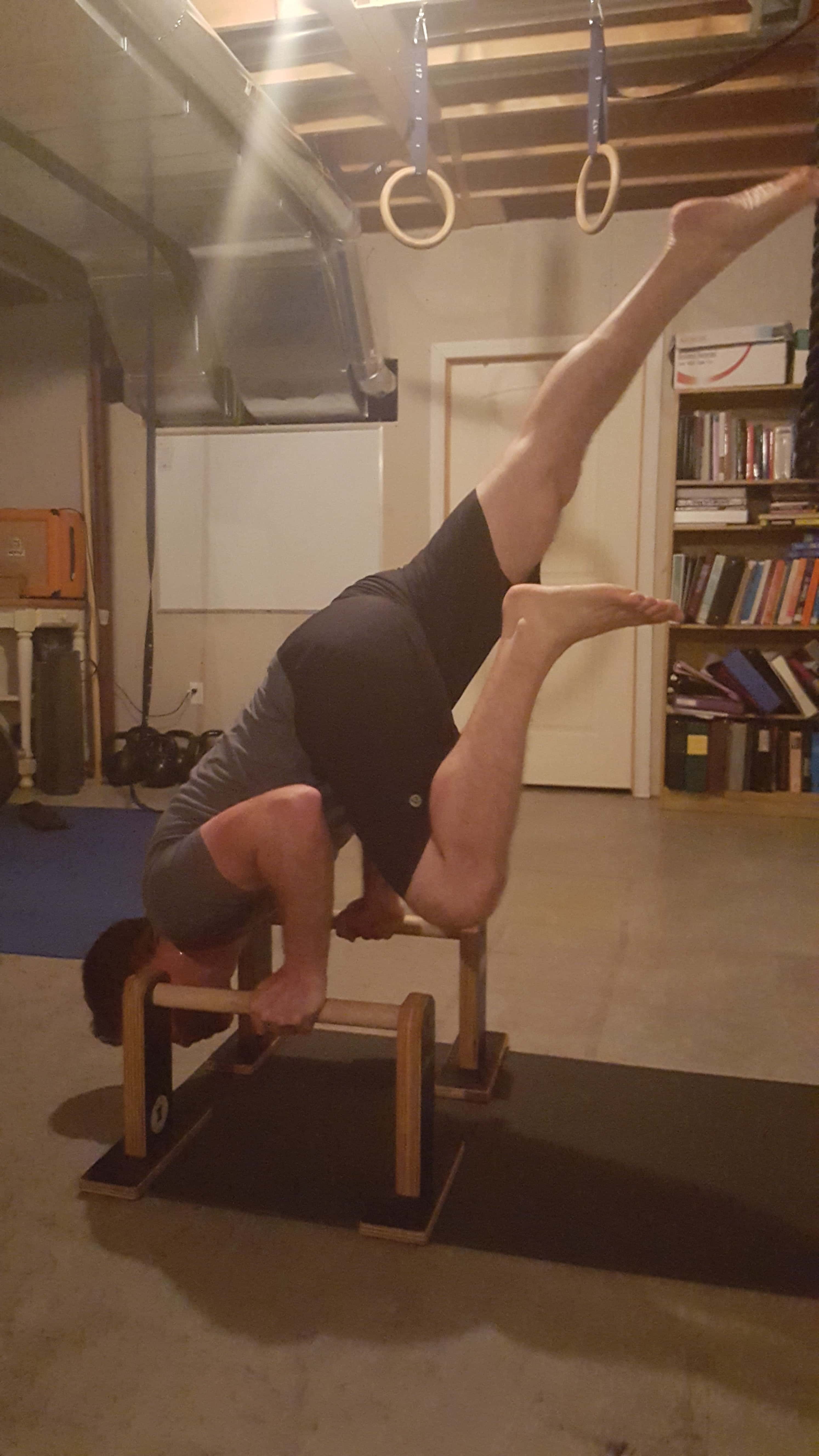If you’re reading this, chances are you’re really into doing yoga. You’ve seen YouTube videos of yogis seemingly “floating” above the floor in a variety of mind bending positions, you’ve scoured the city for the best yoga studio with the best instructor and you certainly enjoy the overall sense of wellbeing that overcomes you after a gruelling flow. You may even be a member of the Man Flow Yoga community. If you’re not, you should be! Whatever the case may be, yoga is your thing. Kudos to you! The attraction to yoga often stems from its sheer simplicity. Practicing requires no more than your own body and the floor beneath your feet. Mats are optional (but recommended)!
If you’re into yoga and you’ve stumbled across this article, it is also very likely that you take your training seriously and that you want to get the most out of the time you set aside to train. So much time and effort is wasted by individuals trying to find “the perfect program” that addresses every one of their strengths and weaknesses and allows them to achieve all of their goals simultaneously. Well guess what…such a program DOES NOT EXIST! Again, if you’re reading this, you likely already know that.
I’ve been doing yoga for around 2-3 years now and although it is an extremely effective training method, like any other discipline, it has its weaknesses. Impressive upper body pushing and pulling strength is hard to come by when following a strict yoga regimen. It isn’t impossible, but there are certainly other tools we can use to help develop these areas more effectively. Being a bodyweight or calisthenics enthusiast means that a high degree of minimalism is essential in the pursuit of physical goals. There are however a few pieces of equipment that are indispensable if you want to maximize your potential. Those looking to push the limits of what their body is capable of owe it to themselves to look into getting a pair of rings and/or parallettes.
A quick Google search for either one of these tools will return thousands of sites all claiming to have “the best” training program to “build the biggest muscles” in the shortest amount of time. Do yourself a favour and ignore such bold claims. I’ve done the research and I’ve put in the training time and I’m here to point you in the right direction! If you’re looking to up your yoga game or to increase your movement competency in general, you owe it to yourself to check out the programs offered by Gold Medal Bodies (GMB). Like any other bodyweight discipline, their programming focuses on slow, consistent and intelligent progression. No matter what your current level of ability, they’ve got you covered. Keep in mind, these guys do not specialize in yoga although their programming shares some similarities. In the beginning, movements are isolated and static poses are timed for a given number of sets. Once you feel ready to move onto the next progression (GMB prescribes a very precise method for determining this) a new set of movements and static poses are provided. The goal at the end of each program cycle is to perform a flow that integrates all of the movements and poses mastered over the course of a minimum of 3 months.
Alright, so what does all of this have to do with yoga? In any bodyweight discipline there are a few basic principles that are of primordial importance in order to successfully progress without injury. By practicing new movements, or even old movements with new tools, the body begins to adapt and we can begin to better understand these principles. My goal here is to highlight how using rings and parallettes can help you increase your performance in yoga. The following list is in no way exhaustive, but it’s a good starting point.
#1 Full body tension
In order to maximize the benefit of a given exercise and in order to avoid certain injury, it’s important to have a good understanding of full body tension. People have written entire books on the subject so it’s definitely something you should be aware of when training. Basically, you want all muscles firing together throughout a given movement or static pose. For example, a plank isn’t just a matter of supporting your weight with your hands and feet. The abdominals must be active to protect the lower back; the glutes and quads need to be engaged to keep a straight line from head to toe; the elbows should be externally rotated and hands forcing towards the feet to fire the lats. The plank is a full body exercise when done properly and can be quite challenging despite the lack of movement. Integrating rings or parallettes into your plank practice can help you further understand this principle. This is where GMB programs come in handy.
The video below includes the following:
static (yoga plank) plank, parallette battering ram, and parallette plank side to sides
The video below includes:
Ring plank rollouts with mountain climber
These exercises are straight out of the GMB P1 (Parallettes 1) and R1 (Rings 1) curriculum. By adding a small element of movement to your plank you can begin to understand which muscles need to be working in order to properly execute the exercise. Once we begin to comprehend the idea of full body tension, we can carry it over to any and all movements and poses. Take the basic forward fold/half lift combination. These can be entirely active poses if you consciously target the appropriate muscles.
Active forward fold
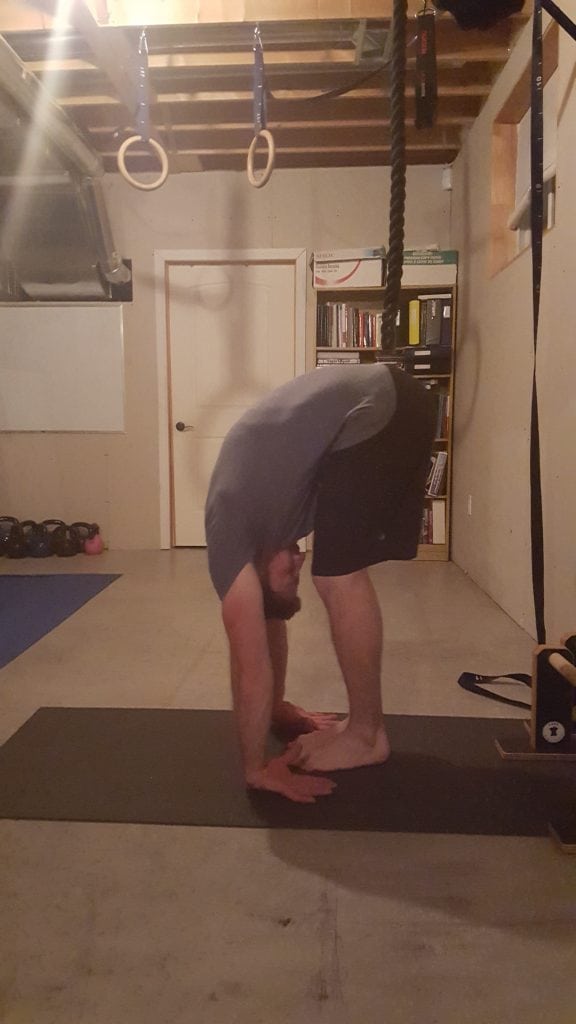
Active Half Lift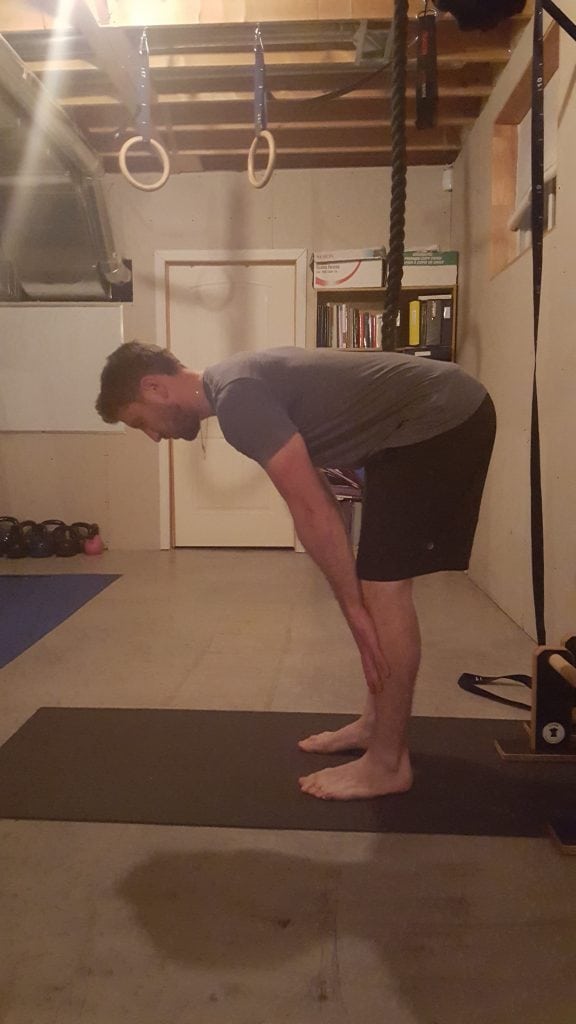
Although I may look totally relaxed in both of these poses, I’m actually creating a state of full body tension. The forward fold should engage the core, helping you pull your chest as close to the thighs as possible and stretching out the lower back. The half lift should feel like you’re doing a pull-up with the lats framing your upper body as you press into your shins with your hands all the while feeling a deep stretch behind the knees as you engage the glutes.
Rings and parallettes offer us the opportunity to progressively increase the difficulty of fundamental exercises in ways that are nearly impossible on a yoga mat. Additionally, they offer an extended range of motion through which the body can be challenged, opening up a whole new world of movement possibilities.
#2 Breathing
Ever notice that when you try out a challenging exercise for the first time you have a tendency to hold your breath? Or perhaps you’re trying to squeeze out a few extra reps and your face is turning red from the effort. If you aren’t breathing, you should probably consider regressing the movement, i.e. choose an easier progression that you can do in a controlled manner while maintaining a steady breathing pattern. GMB outlines a specific method of determining when to progress to a more difficult movement. I won’t get into the details here, but essentially by combining a rating of your perceived effort with a rating that describes the quality of the repetitions performed, a client can determine when it is appropriate to increase the level of difficulty. The required effort needed to perform an exercise along with your ability to perform said exercise in a smooth and controlled manner is directly related to your ability to breathe correctly. If you aren’t breathing, you’re out of your league and should regress the movement (decrease the difficulty). Conversely, if you’re attaining the prescribed number of reps and your breathing is effortless it’s likely time to make things more challenging. The more laboured your breathing becomes, the harder your muscles are working since they require more oxygen to perform the desired task. This concept also relates directly to principle #1 (full body tension). In order to advance to more complex or difficult movements, we must learn to breathe consistently while maintaining tension throughout the body. This is certainly easier said than done. Your breath should always be synchronized with your movement pattern. A simple way to practice this is to time exercises according to your breath. Take a look at the following static poses:
Crow Pose
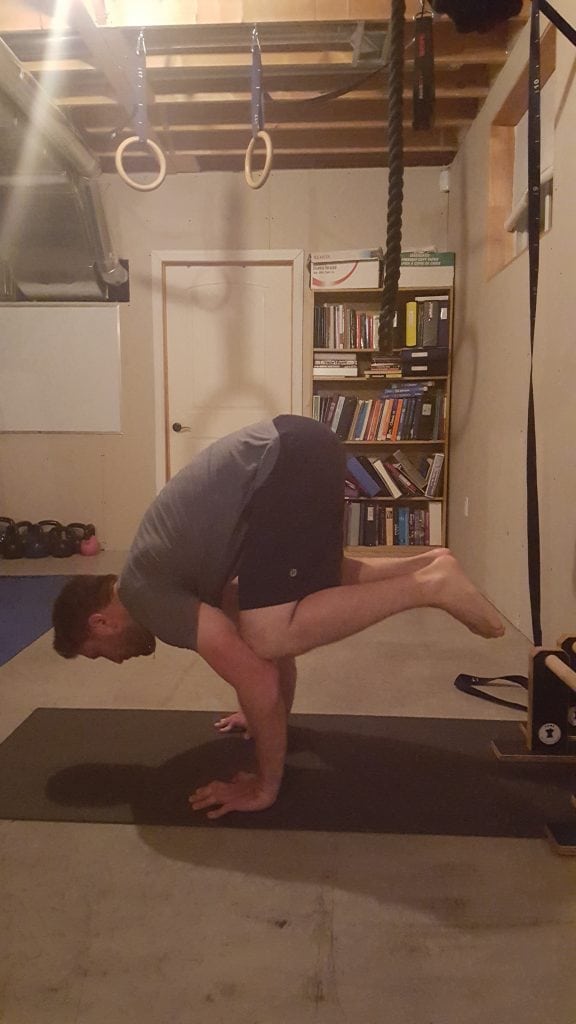
Tuck Planche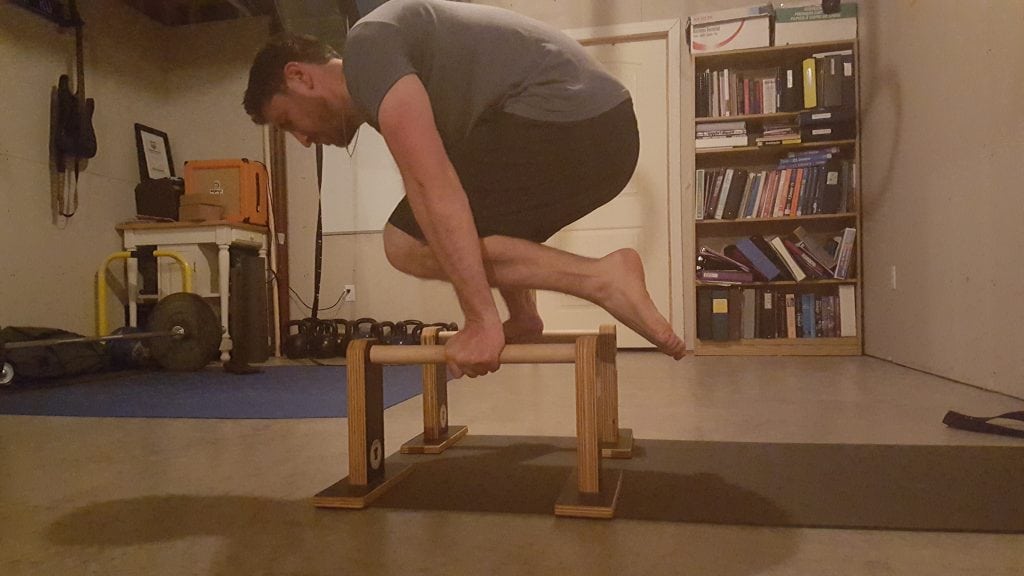
Shoulder Stand
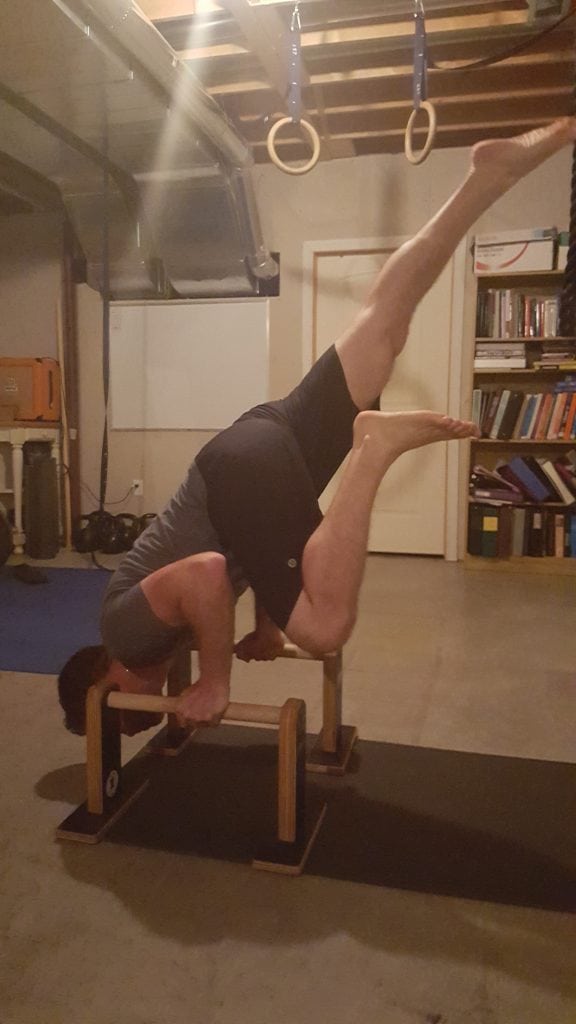
I’ve gotten pretty good at holding a crow pose so my breathing is pretty controlled and I can hang out here for quite a while. When I move to a shoulder stand from the P1 program from GMB, my breathing becomes more laboured. In the last pic, I’m mostly holding my breath in order to maintain tension in my body. I need to get stronger before this can become a feasible progression for me. Speaking of progression…
#3 Progression
Everyone has their starting point. For some it’s 30 pounds overweight, for others it’s a 100 meter jog. Mine was 6 chin-ups followed by a week of recovery because I had no idea what I was doing! That was 6 years ago. Whatever the case may be, the goal is to figure out what challenges you enough without causing injury and without compromising the control of your breath. There is only so much you can do on a yoga mat. Movements and poses can certainly be progressed, but as I mentioned earlier, everything has its limitations. In the following examples, the limitation is my own body. From the floor, I am unable to get my knees tucked in close enough to my chest in order to make the transition from one position to another. Parallettes and rings solve this problem. By raising the body higher above the ground, I’m able to explore new ranges of motion that would otherwise be inaccessible on the floor. This opens up countless possibilities for progressing a variety of movements often practiced in yoga.
Including progressions such as these in your current training regimen will certainly increase your strength, which will inevitably improve your endurance and control on the yoga mat. Think of the transition from a plank to a downward dog. If we look specifically at the shoulders, we begin to see some similarities with the movement patterns in the above videos. We’re going from a forward pushing motion to an overhead pushing motion.
Plank to downward dog
Once we become comfortable with these transitions and we’re certain we are breathing properly, we can take it a step further and begin exploring other, more challenging poses such as dolphin or scorpion.
Dolphin
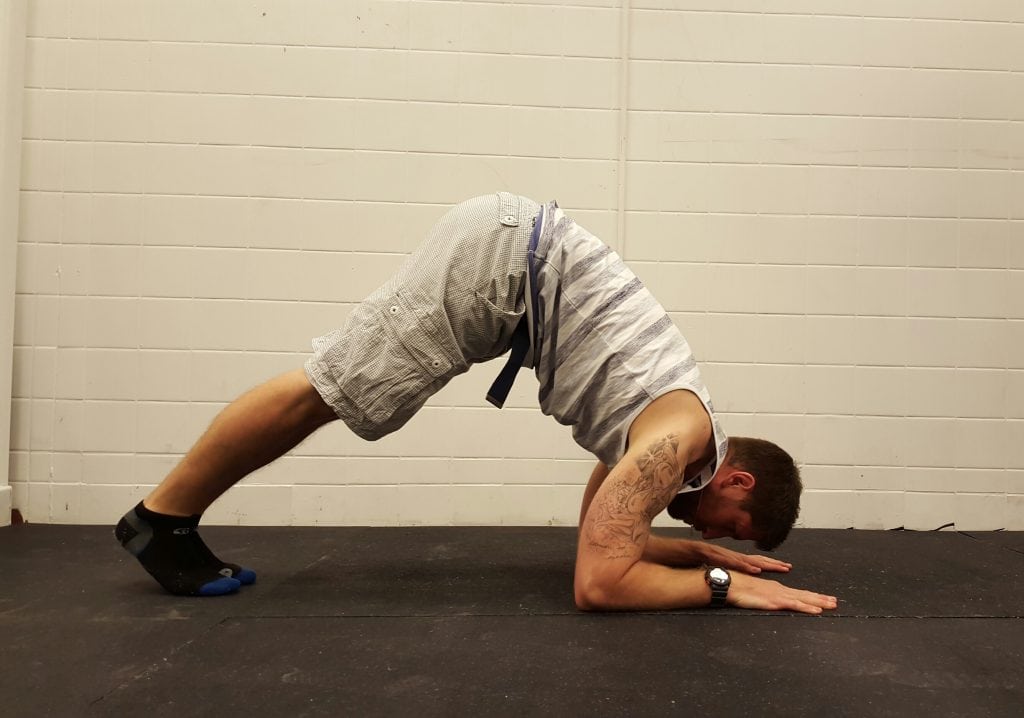
Scorpion

#4 Move slow to master a movement
Time to put it all together! You’ve identified what muscles need to be active for a given exercise (all of them!), you understand the importance of correct breathing when performing that exercise and you know that once this becomes effortless and you can breathe easily throughout the movement, it’s time to progress to something more difficult. GMB likes to use the saying “make it pretty”. This basically means that in order to master a movement, you need to be able to do it gracefully, with control, through every inch of the range of motion. We do the same thing with Man Flow Yoga. Graceful movement is the name of the game. Smooth transitions between poses while maintaining control of your breath is the ultimate goal. It is my personal belief that this is what we should all aspire to achieve. Acrobats and gymnasts have this down to a science and they perform what I believe to be some of the most impressive and beautiful spectacles around. If you’ve ever watched the Olympics or a Cirque du Soleil show you’ll know what I mean. I’ve taken this principle and simplified it considerably in the following videos:
30 sec dip
L-sit pull-up side 2 sides
Skin the cat
Sure you’re not doing as many reps, but the “time under tension” is through the roof! It’s all about control. By slowing things down, we can determine our level of competency with a given exercise. The slower you go with good form, the more progress you’ve made and the closer you get to mastering that movement. If you want a shortcut to understanding this principle, try doing a standard push-up on a pair of rings (slow and controlled of course!) and you’ll quickly realize that it’s a completely different beast! The added range of motion granted with parallettes or the instability of a set of rings will help you discover huge amounts of untapped strength and motor control that will undoubtedly have a ton of carryover to the yoga mat.
Wrapping up!
It is my belief that if you want to have a well rounded approach to your training, you can’t afford to limit yourself to a single discipline. True, some do exactly that with great success, but it’s not for everyone. Most people require a certain amount of variety in order to stay motivated. I include myself among this group. I do however like to keep things as simple as possible. The programs offered by GMB require no more than a floor, a pair of rings or a pair of parallettes. By following the principles outlined above, it is possible to achieve some pretty impressive feats of strength. Add some new tools and some new exercises into the mix and your yoga practice will benefit immensely. Rings or parallettes, combined with the know-how and support of a GMB program along with your own sweat and dedication will carry you to new heights of strength and grace you never would have thought possible. Here’s where 3 months of parallette training got me.
P1 Intermediate flow
It isn’t perfect, but it’s progress and that is what ultimately matters. Anything that will help me move better is ok in my books. At the end of the day, these are all just a few more tools in my tool belt. Spice things up, stay motivated and keep moving. I know I will…although I doubt I’ll be ditching my yoga mat anytime soon! Cheers!
Emerik isn’t the only Manbassador using Gold Medal Bodies programs to get better. Here’s what Everett, another Manbassador involved in GMB training programs had to say:
After I had become pretty proficient with yoga asanas, I had an “Oh S**t!” Moment; After a year of only practicing yoga, I was facing a serious imbalance between pulling and pushing strength, and I needed something more to correct this imbalance. That’s where GMB Rings 2 came in. Initially I didn’t realize how perfectly yoga supplementally paired with GMB. I began using yoga as a warm up, cool down, and an off-day activity to keep up on mobility and flexibility while I continued to increase my pushing/pulling strength on the rings. Yoga and GMB also embrace a similar mindset as well! Slow, controlled movements emphasizing proper form and muscle engagement first and foremost. By combining Man Flow Yoga and GMB, I had stumbled upon the perfect combination for building lean, functional strength while maintaining mobility and flexibility.
Why are we recommending another online fitness program? We acknowledge that yoga isn’t all that your body needs in order to be as strong as possible. Yoga can be great as a primary, supplementary, or complementary form of fitness, but we definitely recommend incorporating at least some sort of resistance work that helps to strengthen your body in ways that yoga does not, mostly through pulling and rowing motions, like pull-ups, ringwork, or horizontal row exercises. Hanging is absolutely for your shoulder and upper back health, and Gold Medal Bodies is the best program that we know of, online or otherwise.
Concerned about getting more of the same? Don’t be. Man Flow Yoga and Gold Medal Bodies are different enough that you’ll get plenty of variety by going through both programs. (We definitely wouldn’t be sharing this blog with you if it was all the same, or we didn’t think that it would be a great complement.) Many of the Manbassadors have completed Gold Medal Bodies Programs as well, including Richard and Everett.
If you are interested in starting a Gold Medal Bodies Program we recommend starting out with the P1 program, the one described in the blog here, because it focuses on so many movements that you won’t find in yoga. It’s still bodyweight, so no need to purchase gym equipment, but you will need a set of parallettes, rings, and something to hang those rings on. Click here to learn more about the P1 program!
If you don’t think you’re ready for the P1 Program, click here to take a look at the other training programs that Gold Medal Bodies offers.
Thank to our friends at Gold Medal Bodies for allowing us to post this blog. We hope you take a look at what they have to offer!
